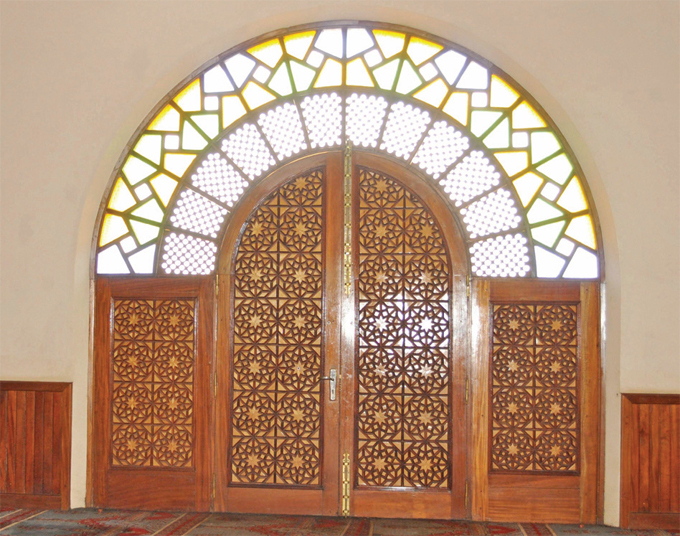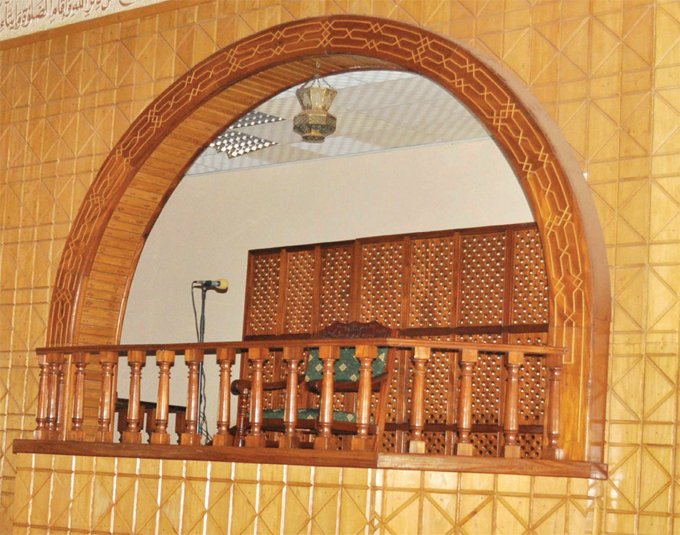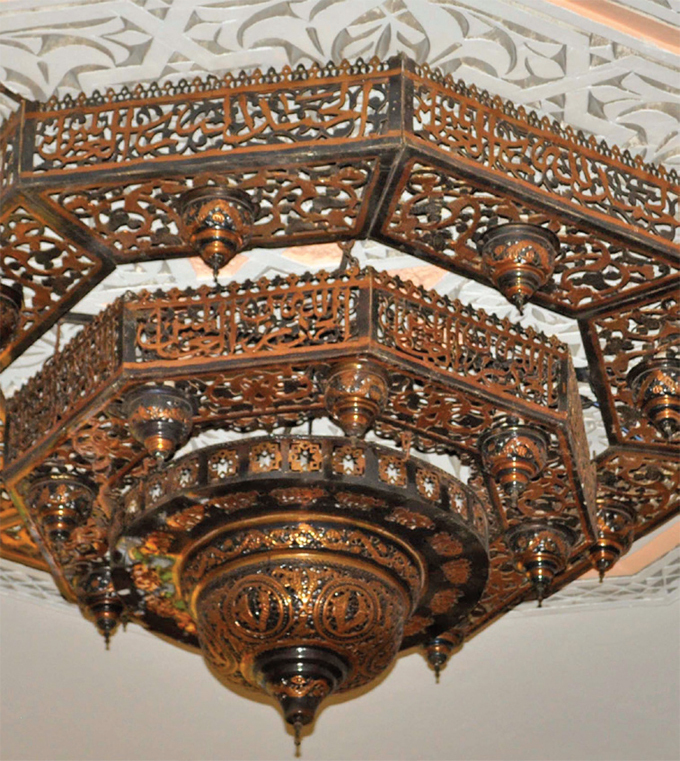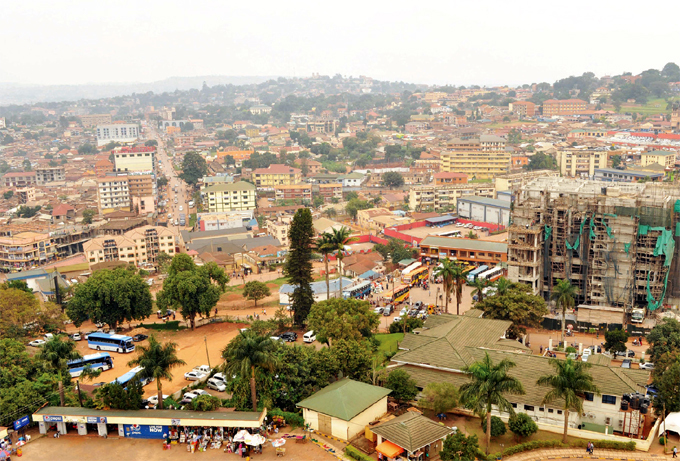Inside the Gaddafi National Mosque
Gaddafi Mosque, the biggest mosque in Uganda, is adorned with exquisite furniture
For the many times I have been at the Gaddafi National Mosque in Old Kampala, I had never imagined that tourists visit the grand mosque for purposes other than prayer.
It is the biggest mosque in Uganda and the seat of the Uganda Muslim Supreme Council. My colleague and I arrived at the mosque at around 11:00am for a press briefing and planned to leave as soon as possible.
After the briefing at noon, we came out of the Mufti’s office, but became curious when we saw many white men and women coming in and others leaving the premises.
Although there is an adage, ‘curiosity killed the cat’, we had to find out what these visitors were coming to do at the mosque. We decided to follow a group that had just entered, anxious to find out what was really going on.
We asked one of the visitors, who informed us that they were there for a tour. So, we eagerly followed. It is custom to remove shoes before entering the mosque and the tourists complied.
We proceeded to the men’s side of the mosque and a tour guide, Muhammed Kiwanuka, informed us that we had started the tour. I had been to this mosque many times, but had never gone to the men’s side, because women and men sit separately.
 The doors and windows were imported from Italy
The doors and windows were imported from Italy
The interior
When I stepped on the soft carpet, it felt so good. The carpets are made with exceptional craftsmanship and are so comfortable.
At the front is a well-crafted Mihrab, a semi-circular position that represents the quibla, the direction of Mecca, outside the pulpit, where the imam sits to read Koran messages to the Muslim worshipers.
The Mihrab is crafted with expensive and durable wood fittings that Kiwanuka says were imported from Italy. On the right side of the Mihrab is where the Koran is kept in a glass structure.
It is the biggest I have ever seen in my life! Kiwanuka says it represents 114 chapters of the Koran on which the Islamic teaching is based. He explains to the tourists that the Koran is in Arabic language and, therefore, is read from right to left.
From the ceiling hangs huge chandeliers, branched ornamental light fixtures comparable to what we see in movies about royals. We proceed to the women’s side, which is slightly smaller compared to the men’s side. The guide says it is smaller because women have an option of performing their prayers at home.
 The well-designed pulpit
The well-designed pulpit
The Minaret
When we were done admiring the interior beauty of the mosque, I thought the tour had come to an end. Kiwanuka then told us that we needed to be energetic and ready for the next task, as it was the most important of this tour.
We walked to a distinctive tower structure, the minaret, which is best known as the place where the muezzin calls Muslims for prayers.
Each mosque has one, but the minaret at the Gaddafi Mosque is more of a skyscraper. At the entrance, we were ushered in by Fatuma Nalugya, a tour guide who told us we would be able to see a 360-degree angle of Kampala if we climbed to the top.
I doubted her, not because I did not trust her, but because I thought achieving the 360 degrees view could only be possible by use of a drone. Well, at 12:25pm, we set off to climb the 304 steps to the top of the minaret.
 Lights installed in the mosque were imported from Egypt
Lights installed in the mosque were imported from Egypt
By 12:40pm, we were looking down at the heart of Kampala. I was able to see all the seven hills of Kampala at once. The roads leading to and from the city are clear from this view.
Prominent buildings such as the Mapeera House, Crested Towers, the Aya Hotel, among others stand proud, but do not hide the smaller buildings from view.
From here, I was able to settle my doubts about the redevelopment of Nakivubo War Memorial Stadium. I saw that there is a stadium under construction.
HOSTS 50-80 TOURISTS DAILY
After our tour, there were three more tourist groups waiting to access the mosque premises. Rashidah Katutu, a tourism offi cer at the Uganda Muslim Supreme Council, said the office receives between 50 to 80 tourists daily during the peak season.
According to Katutu, the peak seasons are June, July and August. Every foreign tourist pays sh15,000, while nationals pay less to access the mosque and minaret.
Kiwanuka said the proceeds are used to cater for the mosque because at the moment, it has no external support for that purpose.
 Tourists at Gaddafi Mosque, which was built by the Libyan government as a gift to Uganda’s Muslims
Tourists at Gaddafi Mosque, which was built by the Libyan government as a gift to Uganda’s Muslims
ABOUT THE MOSQUE
Haji Mutumba Nsereko explains that the Gaddafi Mosque sits on 12 acres of land. Its interior and exterior can accommodate up to 35,000 worshipers. It is one of the fi ve biggest mosques in Africa.
Old Kampala, where the mosque is located, is where the city started. In the 1890s, Frederick Lugard, the chairperson of the Imperial British East Africa Company, built a fort on top of the hill.
Mohammed Kiwanuka, a tour guide, said the fort was near the current minaret until it was removed in 2003 to another place on the same hill to accommodate the construction of the mosque.
The mosque was given to Muslims of Uganda as a gift from the Libyan government, then under the leadership of the late Col. Muammar Gaddafi.
 The heart of Kampala city as viewed from the minaret at Gaddafi Mosque
The heart of Kampala city as viewed from the minaret at Gaddafi Mosque